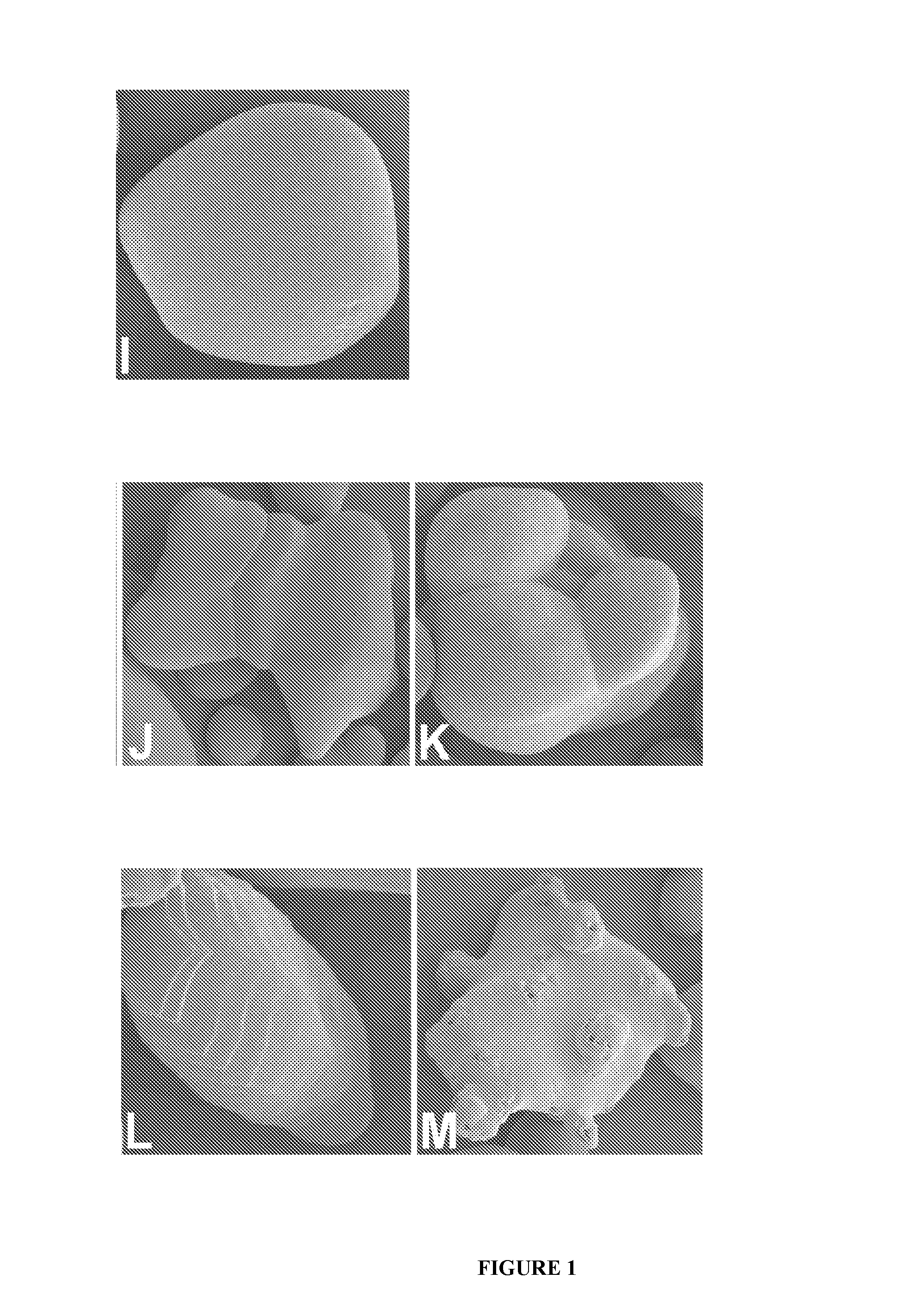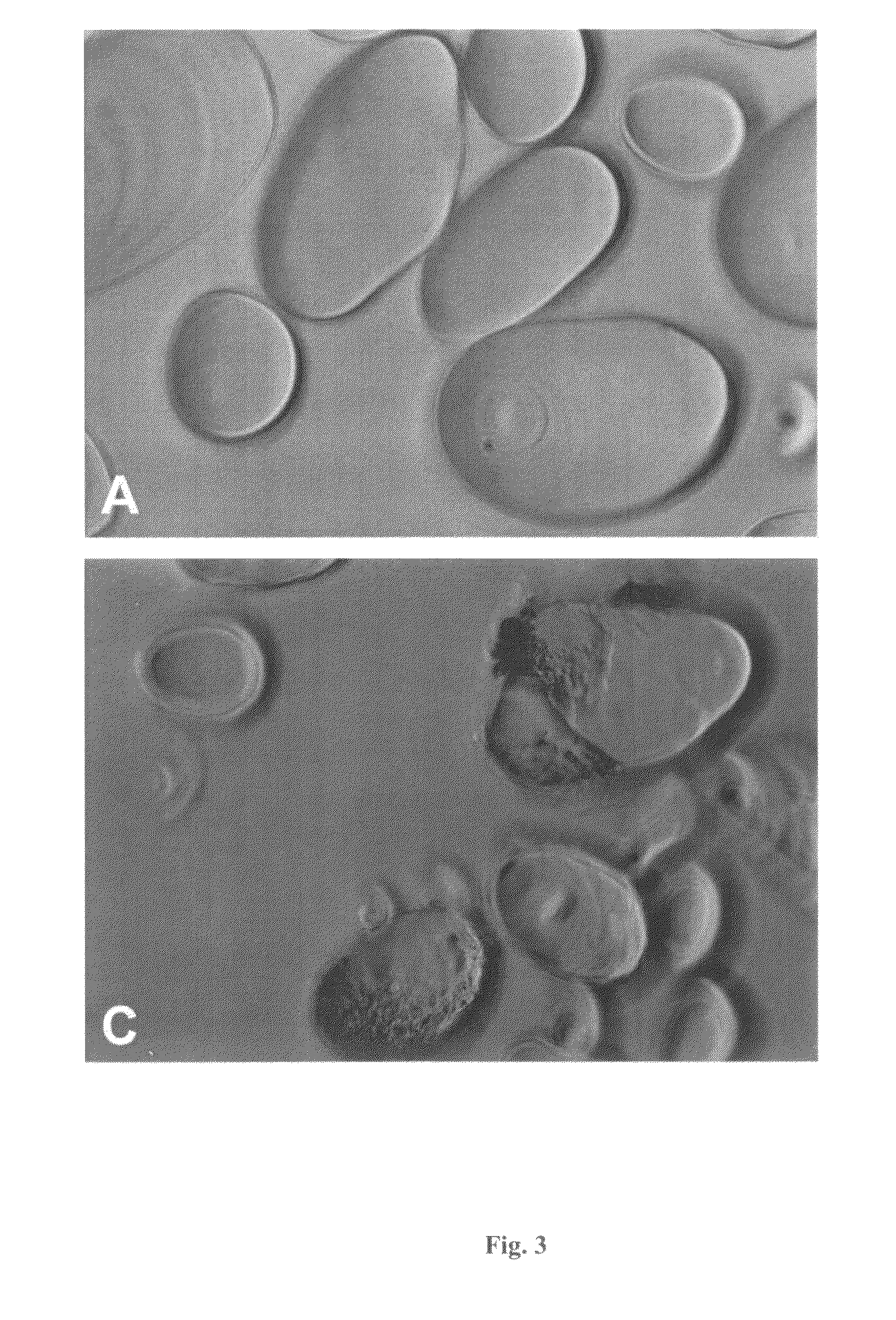Transformed plant expressing a mutansucrase and synthesizing a modified starch
a technology of plant cells and mutansucrase, which is applied in the field of plant cells and plants, can solve the problems of high complexity of mixtures of various types of molecules, inability to homogenize starch raw materials, and inability to synthesize modified starch, etc., and achieves the effect of not being able to predict the efficiency of catalytic reaction, particularly with starch polymers, and not being able to express mutansucras
- Summary
- Abstract
- Description
- Claims
- Application Information
AI Technical Summary
Benefits of technology
Problems solved by technology
Method used
Image
Examples
example 1
Preparation of Constructs Containing the Mature or the Truncated Mutansucrase Gene
[0284]An expression cassette containing the patatin promoter(Wenzler et al., 1989), the chloroplastic ferredoxin signal peptide (FD) from Silene pratensis(Pilon et al., 1995) and the NOS terminator was cloned into the pBluescript SK(pBS SK) plasmid, resulting in pPF. A mature mutansucrase (GtfI) gene from S. downei Mfe28(Ferretti et al., 1987) was ligated in frame between the signal peptide FD and the NOS terminator. The mature GtfI gene was amplified by PCR, with a forward primer containing a SmaI restriction site (5′-AGCTTGCGGCCCCGGGACTGAAAC-3′) (SEQ ID NO: 5) and a reverse primer containing an EcoRI restriction site (5′-GTGGTGGTGGAATTCGAGTTAGTTC -3′) (SEQ ID NO: 6) using the proofreading Pfu turbo DNA polymerase (2.5 units / μl; Stratagene) and cloned into the SmaI / EcoRI restriction sites of pPF, resulting in pPFGtfl.FD and the fused GtfI gene were completely sequenced in one direction by Baseclear (T...
example 2
Transformation and Regeneration of Potato Plants
[0286]pPFI and pPFICAT were transformed respectively into Agrobacterium tumefaciens strain LBA 4404 using electroporation (Takken et al., 2000). Internodal stem segments from the tetraploid potato genotype cv. Kardal (KD) were used for Agrobacterium-mediated transformation. Transformants were selected on plates with MS30 medium (Murashige and Skoog, 1962) containing kanamycin (100 mgA). 30 transgenic, root forming, shoots per construct were multiplied and were transferred to the greenhouse for tuber development. The mature tubers were harvested after 18 weeks.
[0287]Transformed potato plant series are referred to as KDIxx and KDICxx respectively, in which I and IC refer to the Gtfi and gtfiCAT genes respectively and xx to the clone number.
example 3
Starch Isolation
[0288]Potato tubers were peeled and homogenized in a Sanamat Rotor (Spangenberg, The Netherlands). The resulting homogenate was allowed to settle overnight at 4° C. and the potato juice was decanted and stored at −20° C. for characterization of soluble mutan polymers. The starch pellet was washed three times with water and finally air-dried at room temperature for at least three days. The dried starch was powdered and stored at room temperature.
PUM
| Property | Measurement | Unit |
|---|---|---|
| temperature | aaaaa | aaaaa |
| temperature | aaaaa | aaaaa |
| temperature | aaaaa | aaaaa |
Abstract
Description
Claims
Application Information
 Login to View More
Login to View More - R&D
- Intellectual Property
- Life Sciences
- Materials
- Tech Scout
- Unparalleled Data Quality
- Higher Quality Content
- 60% Fewer Hallucinations
Browse by: Latest US Patents, China's latest patents, Technical Efficacy Thesaurus, Application Domain, Technology Topic, Popular Technical Reports.
© 2025 PatSnap. All rights reserved.Legal|Privacy policy|Modern Slavery Act Transparency Statement|Sitemap|About US| Contact US: help@patsnap.com



